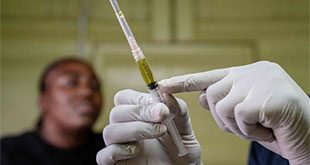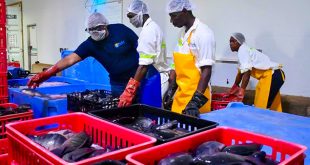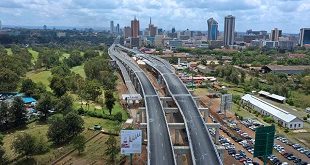“These elephants move seasonally. If they feel there is not enough (food) to live on; they move, and remember, they move in big numbers,” he said, “There is nothing unusual happening in Queen Elizabeth. We would say this is unusual if say, half of the elephants left Queen Elizabeth and crossed to Virunga National Park. If this happened, then we would realise there is a problem.”
Elephants are intelligent, sociable, affectionate animals that depict behaviour similar to human beings. They are, for instance, known to care for weaker individuals, grieve over dead companions and if needs be, they will even adopt orphaned calves. They live in family groups of varying sizes led by matriarchs.
They are known to traverse large swathes of landscapes while looking for food and water. Conservationists say a single mature individual can consume between 250-350kg of foliage and drink between 100-200 litres of water every day. Given such existential needs, the home ranges of elephants can span hundreds of kilometres.
Uganda is left with about 6,000 elephants and they are mostly found in the landscapes of Kidepo in the far northeastern area closer to the South Sudan-Kenya border. Larger populations are found in the Murchison-Semliki and the Greater Virunga landscape—a large swath of territory that straddles western Uganda, eastern Democratic Republic of Congo and parts of Rwanda.
Still, conservationists constantly worry about the safety of elephants because they have a low reproduction rate and therefore recover more slowly compared to other animals. On average, a female elephant will have one calf every 8.6 years.
But while local conservationists say it is quite common for the elephants to cross borders, in the past decades, the elephants have tended to move more from Virunga to Queen Elizabeth National Park and stayed in Uganda permanently to, presumably, escape the restive eastern DR Congo which is the base for several fighting groups of rebels, government forces, and poachers.
The eastern Democratic Republic of Congo remains insecure not only for the elephants but also the Congolese people including the conservationists tasked with protecting the threatened wildlife in Virunga which is Africa’s oldest conservancy.
In April, last year, for instance, 12 Virunga Park rangers, a driver and four members of the local community lost their lives in a ferociously violent attack by a militia group, the deadliest known attack on park rangers on the African continent in recent history.
On Jan. 10, this year, six park rangers who were patrolling on foot were killed in an early morning ambush by armed assailants.
On Feb.25, this year, Luca Attanasio, the Italian ambassador to the Democratic Republic of Congo alongside an Italian military officer were killed in the Rutshuru area in eastern DR Congo after their car was attacked by insurgents even when they were travelling in a UN convoy. These are threats that elephants do not take lightly and often flee to safety in Uganda.
That is possibly why some sources told The Independent that the exodus of elephants from Uganda could be a signal that they are under a yet unidentified threat in Queen Elizabeth National Park.
Some say the migration started during the COVID-19 lockdown, a period which also coincided with an uptick in poaching in most of Uganda’s conservancies. But others ruled out poaching out rightly. Others point to oil exploration activities within the elephants’ home range.
A source within the local conservation network told The Independent it is difficult to determine the triggers for the elephant migration at the moment because “it has been a while since elephants in Queen Elizabeth National Park were collared.”
But studies done in 2015 by conservationists in Murchison Falls National Park at the request of a subsidiary of French oil major, Total, to analyse the ranging behaviour of elephants during oil exploration between 2013 and 2014 followed by a period of no exploration between July 2014 and February 2015 showed how there had been a net movement away from well pads being drilled up to 5 km away.
The oil exploration activities during this time included construction of well pads, drilling and testing of the well, restoration of the well pads, collection of murram from borrow pits, moving rigs along the roads in the park and undertaking of 3-Dimensional (3D) seismic surveys.
The study noted that elephants moved shorter distances (500-1000m) when near active well pads or moved longer distances (4000-8000m) when near seismic activity. According to the study, the elephant locations could be predicted by both oil exploration activities (60% of factors) and natural factors such as distance to water, vegetation and distance to park boundary (32%) and by distance to roads which were used for oil exploration traffic as well as tourist traffic (8%).
But Emma Mugizi, the senior corporate affairs officer at the Petroleum Authority of Uganda (PAU) told The Independent on March 18 that linking elephant migration from Queen Elizabeth National Park to Virunga to oil exploration would be far-fetched.
The oil block which is found near Queen Elizabeth National Park and forms part of the Greater Virunga is the Ngaji Block. However, although in 2015 the government included it among the six blocks that are up for licensing, UNESCO, the EU Parliament and several civil society organizations have repeatedly asked the government to reconsider oil exploration plans in the environmentally-sensitive area around Lake Edward. Civil society organisations have repeatedly said oil exploration activities in the Ngaji Block could disrupt the ecosystem around the highly acclaimed Virunga National Park.
The closest oil exploration activities are around the Kanywataba Block, a 344 sq km area, found at the southern tip of Lake Albert. The block was given to Australian firm, Armour Energy Ltd, on Sept. 14, 2017 after the government signed a production sharing agreement with them.
The licence was initially licensed to Total, China’s CNOOC, and Tullow but the three firms, which are now overseeing the development phase of the country’s crude oil discoveries reverted it to the government in 2012 after failing to hit oil.
However, although the government gave the Australian firm two years to complete a 2D seismic survey as part of the minimum work programme, the firm wrote to the minister in mid-October 2019 declaring that it was suspending work as a result of an event of force majeure (flooding and COVID-19).
Interestingly, Armour said in a statement that by the time they asked for extension of their licence, close to 90% of land clearing (96.06km) and 810 boreholes (into which the seismic charges are placed) or 37.5% of the total had been drilled.
But Mugizi told The Independent that the Australian exploration firm has not done any drilling activities ever since the government gave them a licence three years ago.
“And even if they did (drilling), the wildlife that would be affected would be in Semliki National Park and not Queen Elizabeth National Park which is almost 100km away,” she said.
****
 The Independent Uganda: You get the Truth we Pay the Price
The Independent Uganda: You get the Truth we Pay the Price





